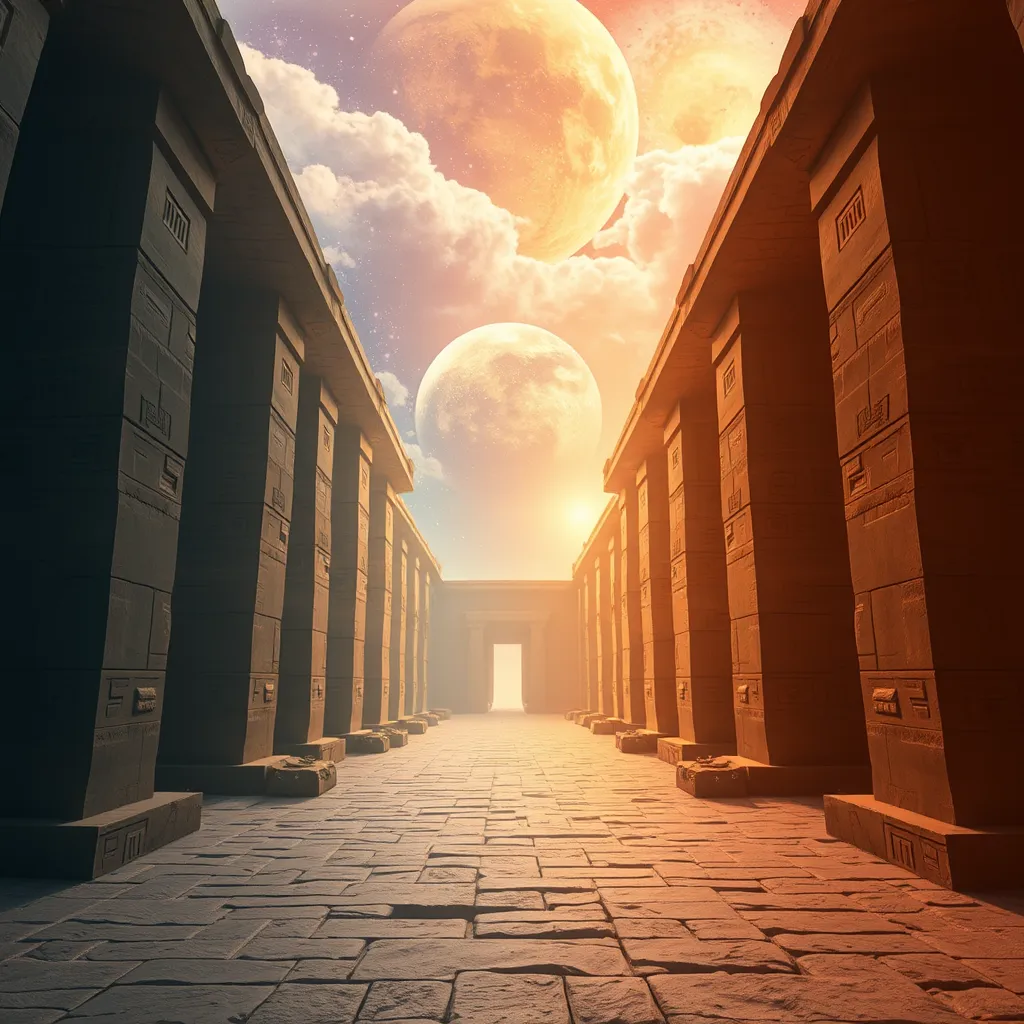The Duat: A Journey Through Time and Space
I. Introduction to the Duat
The Duat is a significant concept in ancient Egyptian mythology, representing the realm of the afterlife. It is often depicted as a complex landscape that encompasses various regions and challenges, through which the souls of the deceased must navigate. The Duat symbolizes the transition from the mortal world to the eternal, reflecting the Egyptians’ deep beliefs about life after death.
In ancient Egyptian culture, the afterlife was not merely an extension of life on earth but a continuation of the soul’s journey. The Duat was seen as both a physical and spiritual space, where the deceased would encounter deities, face judgment, and ultimately seek eternal peace with the gods.
II. The Geography of the Duat
The Duat is often described as a vast and intricate landscape consisting of various realms and environments. Each region has its own characteristics and significance. Key areas within the Duat include:
- The Fields of Aaru: A paradise-like region where the souls of the righteous dwell in eternal bliss.
- The Lake of Fire: A terrifying area where souls face punishment for their wrongdoings.
- The Hall of Judgment: The place where the deceased are judged by Osiris and other deities.
The symbolism of these regions reflects the moral and ethical beliefs of ancient Egyptians. The contrasting landscapes represent the duality of existence, with rewards for the virtuous and punishments for the wicked.
III. Deities of the Duat
The Duat is populated by numerous deities, each with specific roles and responsibilities in guiding and assisting the souls of the deceased. Key gods and goddesses associated with the Duat include:
- Osiris: The god of the afterlife and resurrection, who presides over the judgment of souls.
- Anubis: The god of embalming and the dead, responsible for guiding souls through the Duat.
- Isis: A goddess of magic and healing, who aids in the resurrection of Osiris and supports the deceased.
These deities play vital roles in the journey through the Duat, offering guidance, protection, and judgment to the souls navigating this complex realm.
IV. The Journey Through the Duat
The journey through the Duat is a multi-staged process that every deceased individual must undergo. This journey is fraught with challenges and obstacles. The stages of this journey typically include:
- Crossing the Threshold: The deceased must pass through the gates of the Duat, which are guarded by fierce deities.
- Navigating the Waters: Souls must traverse the dark waters of the Duat, often facing terrifying creatures.
- Facing Trials: The deceased must confront various trials, including encounters with serpents and other mythological beings.
These challenges are symbolic of the trials faced in life and the necessity of overcoming obstacles to achieve eternal peace.
V. The Weighing of the Heart
One of the most critical aspects of the Duat is the judgment process known as the Weighing of the Heart. In this ceremony, the heart of the deceased is weighed against a feather, representing Ma’at, the principle of truth and cosmic order. The process unfolds as follows:
- The heart, believed to hold the individual’s essence and deeds, is placed on one side of the scale.
- The feather of Ma’at is placed on the opposite side.
- If the heart is lighter than the feather, the soul is deemed worthy and allowed to enter the Fields of Aaru.
- If the heart is heavier, the soul faces annihilation by the devouring monster Ammit.
This judgment embodies the moral values of ancient Egyptian society, emphasizing the importance of living a just and virtuous life.
VI. The Role of Funerary Practices
Funerary practices played a crucial role in the relationship between the living and the Duat. The Egyptians believed that proper burial customs were essential for ensuring a safe passage into the afterlife. Important aspects of these practices included:
- Burial Customs: Elaborate tombs and mummification were performed to preserve the body for eternity.
- Offerings: Food, drink, and items were placed in tombs to sustain the deceased in the afterlife.
- Rituals: Various ceremonies were conducted to ensure the soul’s safe journey through the Duat.
These customs reflected the Egyptians’ belief in the continuity of life and the importance of honoring the dead.
VII. The Influence of the Duat on Ancient Egyptian Culture
The Duat significantly influenced ancient Egyptian art, literature, and culture. It served as a rich source of inspiration for various artistic expressions, including:
- Art: Tomb paintings and carvings often depicted scenes of the afterlife, showcasing the journey through the Duat.
- Literature: Texts such as the Book of the Dead provided instructions for navigating the Duat and achieving a favorable judgment.
The legacy of Duat beliefs continues to resonate in contemporary spirituality and interest in ancient mythology, demonstrating the enduring impact of these ancient ideas on modern thought.
VIII. Conclusion: The Duat’s Enduring Mystique
The Duat remains a fascinating and complex concept that shapes our understanding of life and death in ancient Egyptian culture. It reflects the Egyptians’ profound beliefs about the afterlife, morality, and the soul’s journey beyond the mortal realm. As we explore the mysteries of the Duat, we find a rich tapestry of symbolic landscapes, divine beings, and moral teachings that continue to intrigue and inspire people today.
The fascination with ancient Egyptian mythology, particularly the Duat, highlights humanity’s enduring quest to understand the nature of existence and the mysteries that lie beyond life.




